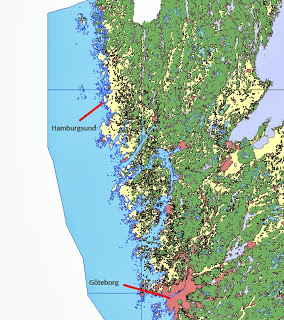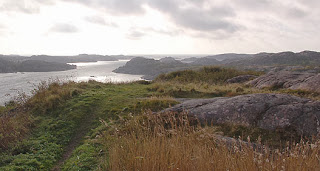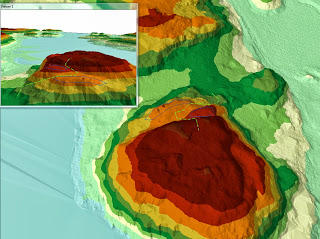Medieval History




- Northampton?s Medieval Castle Remains To Be Brought To The Surface
The nderground remains of Northampton Castle could be brought to the surface under new proposals to regenerate a historic area of the town. Dr Marie Dickie, a member of the Friends of Northampton Castle (FONC), believes exposing some of the remains of...
- Ruins Of 13th-century Castle Discovered In Northern England
Archaeologists have discovered the remains of Westgate Castle in the northern English area of Weardale in the North Pennies region. The lost castle once was part of the Bishop of Durham?s great deer park of Stanhope. From the 13th century through until...
- 13th Century Welsh Castle Goes Up For Auction
A 13th century Welsh castle is set to be sold at auction tomorrow, despite efforts by local residents to stop the sale. Ewloe Castle, in Flintshire county in the northeasten corner of Wales, is to to be auctioned with four other lots which are expected...
- Medieval BohuslÄn: On The History Of Place Names
ON THE HISTORY OF PLACE NAMES My previous posts (part 1 and 2) have been concerned with a castle ruin called Karlsborg, to the south of Hamburgsund. I have tried to put this rather unexplored ruin into a historical and economic context. More...
- The Mscu Blog Has Returned!
Dear MSCU members and blog readers, The Medieval Studies Course Union Executive for 2011 will be taking turns posting on our lovely blog. Today, I wish to share with you a couple pictures of the Medieval castles I visited while in Denmark in the fall...
Medieval History
Karlsborg: A castle by the sea
KARLSBORG ? A CASTLE BY THE SEA

Just south of Hamburgsund in Bohuslän lies a place commonly known as ?Slottet?. This is in an area nowadays mostly inhabited by summer guests, due to the exclusive attraction of Bohuslän's extensive archipelagos. In summertime, this area is full of life, but during the long and harsh winters only a few natives remain. This is nothing new, really, as the coast of Bohuslän have been inhabited seasonally in the past as well, especially during the herring periods of the 16th, 17th and 18th centuries, when seasonal fishing stations where formed on the islands and the coastline. But perhaps, in more distant times, this area was much more active. This can be seen by the many archaeological traces left in the landscape, where we especially can discern a rich Bronze Age culture. Among other things left from this period, we find a large amount of rock carvings and cairns (?röse? in Swedish) in the area close to Hamburgsund and Slottet. But it is not these highly interesting Bronze Age remains that we shall discuss now, but rather the traces of historical times, of the medieval and early renaissance activities in this area.

The beautiful view from Karlsborg, where you can see a part of the earth-works in the foreground. The actual walls of Karlsborg were probably wooden palisades, for which the earth-works that remain served as a foundation. Photo taken from: wadbring.com
The name ?Slottet? is derived mainly from a ruin on a small mountain just by the southern cove leading into the modern community of Hamburgsund. This mountain is surrounded by steep cliffs on all sides, except in the west where what could be either a natural or a humanly constructed ( though quite steep) slope leads up to the top, where the ruin is situated. In modern times, a staircase has been built on this slope, enabling less fanatical visitors to access the ruin as well. When I mention ?ruin?, most people would expect this to be a sort of ?classical? castle ruin, with clear remains of walls, towers etc. This is not the case. All that remains are some earth-works surrounding the top of the mountain, and for the trained eye it is also possible to detect the remains of what could be two barbicans (?förborgar? in Swedish) in the slope.
An archaeologist named Wilhelm Berg excavated the castle in the early 20th century. Among the artefacts where the backside of a canon, canon balls, gun bullets, points from arrows, crossbow bolts and lances. While these artefacts point to military functions, we can of course not depend entirely on the inadequate documentation and excavation methods from this early period in the history of Archaeology. Nevertheless, these findings are interesting.

A Digital Elevation Model made with LIDAR data. The two potential barbicans are marked with blue rings, and the path up to the top is marked with green. The blue area roughly corresponds to the sea level of the late medieval period. Note the highly visible earth-works that surround the top of the mountain, and the iron age mounds visible where the path starts.
According to written history, the proper name for this castle ruin is ?Karlsborg?, and was fortified in 1455 by the marshal of Sweden, Tord Bonde. Entire Bohuslän had in 1455 been taken by the marshal on king Karl Knuttson Bonde's orders, and Karlsborg was built in order to gain control over the fairway between Denmark and Norway, which passed the islands just outside Hamburgsund. However, Tord Bonde was murdered in 1456 by the castle's bailiff, a Dane called Jösse Bosson. After this, Sweden lost control over Bohuslän to the Union (at the time between Denmark and Norway). During the reign of Gustav Vasa, northern Bohuslän was attacked by Swedish troops once more in the 1520s. Karlsborg was restored to it's former glory in 1525, after which the castle became the administrative centre of the region. This secured the connection of Sweden to the North Sea and the trade routes to England and western Europe, if the estuary of Göta Älv, close to present-day Gothenburg, had been ceased by the Union. In 1531, the castle was attacked and razed by the troops of the former Danish king Kristian II ( known in Sweden as ?Kristian the Tyrant?), and the castle was never restored again.

The location of Karlsborg in Hamburgsund's strait.
That was all for now! In the next post, I will use further GIS analysis to investigate whythis place was so important. Karlsborg obviously played an important role in controlling Bohuslän, but there is no clear urban central place in this region, from this period. I will use a mainly quantitative geographical material, through a long-time perspective, to see if we can find some clues. Till then, I hope you have enjoyed this brief introduction to a very interesting site!
- Northampton?s Medieval Castle Remains To Be Brought To The Surface
The nderground remains of Northampton Castle could be brought to the surface under new proposals to regenerate a historic area of the town. Dr Marie Dickie, a member of the Friends of Northampton Castle (FONC), believes exposing some of the remains of...
- Ruins Of 13th-century Castle Discovered In Northern England
Archaeologists have discovered the remains of Westgate Castle in the northern English area of Weardale in the North Pennies region. The lost castle once was part of the Bishop of Durham?s great deer park of Stanhope. From the 13th century through until...
- 13th Century Welsh Castle Goes Up For Auction
A 13th century Welsh castle is set to be sold at auction tomorrow, despite efforts by local residents to stop the sale. Ewloe Castle, in Flintshire county in the northeasten corner of Wales, is to to be auctioned with four other lots which are expected...
- Medieval BohuslÄn: On The History Of Place Names
ON THE HISTORY OF PLACE NAMES My previous posts (part 1 and 2) have been concerned with a castle ruin called Karlsborg, to the south of Hamburgsund. I have tried to put this rather unexplored ruin into a historical and economic context. More...
- The Mscu Blog Has Returned!
Dear MSCU members and blog readers, The Medieval Studies Course Union Executive for 2011 will be taking turns posting on our lovely blog. Today, I wish to share with you a couple pictures of the Medieval castles I visited while in Denmark in the fall...
